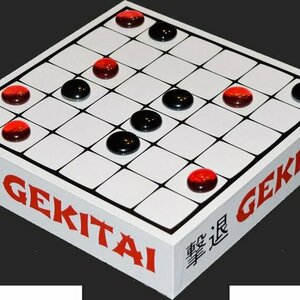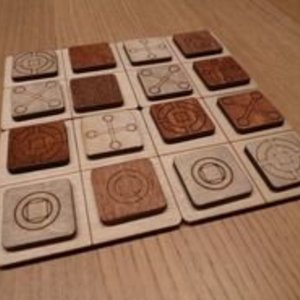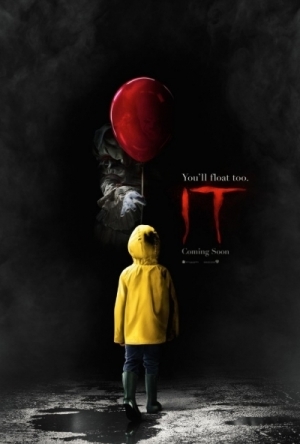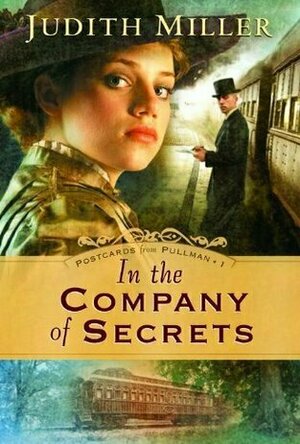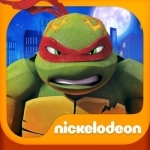
Teenage Mutant Ninja Turtles: Portal Power
Games and Entertainment
App
Help the Teenage Mutant Ninja Turtles travel through portals and fight evil in this action-packed...

Need for Speed Hot Pursuit for iPad
Games and Entertainment
App
TUNED UP FOR HIGH-PERFORMANCE ON iPAD! Feel the rush of the escape and the thrill of the takedown...
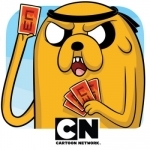
Card Wars - Adventure Time Card Game
Games and Entertainment
App
Floop the Pig! It’s Adventure Time CARD WARS! Play the game inspired by the Adventure Time...

This War of Mine
Games
App
"If you've not already played this brilliant, heart-wrenching game, then mobile is as good a place...
Purple Phoenix Games (2266 KP) rated Gekitai in Tabletop Games
Feb 20, 2020
Gekitai is an abstract strategy game with very minimal rules. The phrase, “easy to learn, but hard to master” is very overdone, but it certainly applies here. For those that are wondering, the term, “Gekitai” is Japanese for “Repel.” You will see why this nomenclature is perfect for this game soon.
DISCLAIMER: We were provided a prototype copy of this game for the purposes of this review. Though I know the designer personally, I will be reviewing this game as an impartial judge. -T
Normally I like to include setup instructions here in this paragraph for my reviews, so I shall do that now. To setup, place the board between the two players and give each player their eight matching pieces. In my game, they are red and black glass beads. For convenience I will refer to the red ones as apples and the black ones as 8-balls. That’s it. You’re setup to play.
The object of Gekitai is to fulfill one of two victory conditions: play until one player has three of their pieces in a row (diagonally OR orthogonally) or finish their turn with all eight of their pieces on the board. Easy, right? It most certainly is! Oh, you want the catch? Ok then, here’s the catch: while players can place any piece on any empty square, once placed the pieces will repel all other adjacent pieces away from itself. This includes their own pieces.
So let’s say you start the game and place your first 8-ball in a corner closest to you. Great opening noob. I mean move. You see, I would just place one of my apples adjacent to your 8-ball and repel it right off the board. That doesn’t mean that I have captured your 8-ball or anything like that. You would be able to use it again next turn if you like, but this is the danger of outside spaces. When repelled, a piece (your 8-ball) continues one space in the direction away from the most recently-placed piece (my apple). So diagonally if diagonal from the just-placed apple, or orthogonally otherwise. Again, this would affect all pieces that are adjacent, not just your opponent’s. Think of placing a piece as someone doing a cannonball in an infinity pool. Everyone already in the pool will get pushed away from the point of impact and may even fall out of the pool, but be able to hop back in soon.
One note about pushing other pieces. One piece can only push one other piece. Here’s what I mean. When my apple is placed near another 8-ball or apple, it repels it, right? Well, a piece may only be repelled if there is an empty space for it to go. If another apple is blocking the pathway of an affected apple or 8-ball, no movement happens. The pieces has been blocked. In this way strategy plays in integral part in Gekitai – you must always be thinking about 10 turns in the future. Play continues in this fashion until a player has achieved three-in-a-row or placed all of their pieces on the board.
Components. Again, we are playing with a PNP prototype game package. Granted, this PNP is assembled by the designer and looks WAAAY better than if I had tried to assemble it myself, so we do take that into consideration. Components aside (because unless you order a copy from the designer via Etsy in the future, you will probably download the files and play on a sheet of paper with coins or other stand-ins), this is a typical, classic abstract strategy-style game. The board can look any way you like in a 6×6 board and you can you use any bits for your game. Heck, you could even play with real apples and 8-balls. But what we were provided is excellent and looks great on the table.
But gameplay. Like I mentioned earlier, I know the designer and his family and they are wonderful people. Luckily that makes no difference here because the game itself is absolutely wonderful! My wife typically kicks my booty in all abstracts. Ok fine, usually in all games. BUT! After playing Gekitai lots with her, she has only beaten me once! When we do play it she asks for rematches several times over and I just love being able to have a go-to game for when we have a few minutes between running around with the kids. I love it. She loves it. We at Purple Phoenix Games, with an enthusiastic guest score from my wife, give Gekitai a cannonball-esque 11 / 12. We suggest you go to the BGG page where the PNP files can be printed. You will want this in your collection.
Purple Phoenix Games (2266 KP) rated Mijnlieff in Tabletop Games
Mar 3, 2021
Typically I explain the theme here and what players’ end goals are. Mijnlieff is a two player abstract strategy game that has no real theme, though the art style uses lots of leaf iconography and the color scheme is very Autumnal. The winner of Mijnlieff is they who score the most points at the end of the game by constructing the most (or longest) sets of 3 tiles in a row.
DISCLAIMER: We were provided a copy of this game for the purposes of this review. This is a retail copy of the game, so what you see in these photos is exactly what would be received in your box. I do not intend to cover every single rule included in the rulebook, but will describe the overall game flow and major rule set so that our readers may get a sense of how the game plays. For more in depth rules, you may purchase a copy online or from your FLGS. -T
To setup each player will choose a color of tiles (or I guess just one player chooses and the other is stuck with the unchosen), and the back of the game bag is placed on the center of the table to act as the game board. Decide the starting player and the game may begin!
On a player’s turn they must place one of their tiles on one of the leaf symbols printed on the bag (the leaf symbols mean nothing other than to show where to place tiles). Easy. The first player will place their very first tile on one of the outermost leaf symbols to begin the game. The second player will then place their tile on the board depending on which tile was just placed by their opponent. You see, in Mijnlieff players cannot just place tiles willy-nilly, no! The tile immediately placed dictates where the next tile may be placed.
For example, if an opponent had just placed the N/S/E/W cross tile (Straight), then the next tile may only be placed on one of those leaves pointed at by the cross. Similarly with the diagonal cross (Diagonal) for diagonal leaves. The leaf tile with a solid circle around it (Puller) instructs the next player to place their tile on any leaf space that touches the original tile, even diagonally. Conversely, the leaf tile with a broken circle (Pusher) means the opposite: the next tile may be placed in any space that is NOT able to touch the original tile.
Players have access to two tiles of each flavor and they are attempting to rid their hand of tiles and create the most lines of three or four tiles for one or two points respectively. Once one player rids themselves of all their tiles the next player may lay just one last tile in an attempt to score more points. Whichever player earns the most points is the winner and, undoubtedly, will wish to play again immediately afterward.
Components. The version I was sent is the most recent XVgames Bagstracts edition in the fancy brown bag. The bag is great, and not only carries the components but doubles as the game board. I mean, I have not really seen that anywhere else. What a great and versatile component. The tiles are all very nicely painted wooden tiles with very clear iconography, which is much appreciated. The rulebook is fantastic and explains the game splendidly. Also included is a set of modular 2×2 mats that can be assembled in ANY fashion to create personalized game boards. I think this is a wonderfully-produced game with excellent components. The art is minimal but effective, and it has orange as a main color, so I applaud that choice as well.
The gameplay is what I would like to rave about here. My wife and I enjoy abstract strategy games together, but I have never seen her be absolutely magnetized to a game as much as she is to Mijnlieff. Right away, the first day I asked her to play it with me we ended up playing it eight or nine times that day. And you know what? We both really were jonesing to play some more. The game is relatively quick, with games lasting around 10 minutes each, but the neural exercises happening whilst playing is such so fantastic.
None of the tiles’ actions are difficult to understand, but each time a tile is placed my mind is racing with possibilities for my next turn. I do not suffer from Analysis Paralysis (AP), and my wife usually takes her times, but I do sit and think a bit more playing Mijnlieff. Sometimes you just need to play a tile to block the other player. You see, if you lay a tile and your opponent is unable to lay a tile legally according to your tile’s actions, then you get to place another tile ANYWHERE on the board. This could lead to a cascade of several tiles being laid on a turn, and THAT is what makes this simply an amazing design.
I now have four titles by designer Andy Hopwood that I will be reviewing, and if any of them are as thoughtful, beautiful, and well-designed I may have found another designer to add to my list of favorites. Purple Phoenix Games (plus my wife) give this one an incredibly respectful 11 / 12. I think what could make this game better is blinged out components. Everything in this bag is great, but Mijnlieff screams for high quality components and just sparkle everywhere. If you need a thinky abstract for two players from a smaller publisher and designer, I plead with you to grab a copy of Mijnlieff. I find it to be a superior design, quick-playing, and just hits all the right spots for my wife and me. And once you receive your copy we can record ourselves pronouncing the title and sending our recordings to the designer for him to choose the closest butchering.
Acanthea Grimscythe (300 KP) rated It (2017) in Movies
May 12, 2018
First, I want to say that I have a thing for Bill Skarsgård. I have since I watched Hemlock Grove, where he plays an upir. So finding out that he would be playing Pennywise somehow dispelled my fear of clowns (which actually formed when I was eight and watched the It miniseries – or at least, the first bit of it). Skarsgård performance is spectacular and I have no complaints regarding his acting.
For the most part, It follows a line between the miniseries and the book. When it comes to a tome the size of It, obviously things have need cutting out. To expect more would likely have mean an entire series (not that I’d complain). There are a few things that really bugged me though. First, Richie does not do his voices in It. This is a major character trait that I feel should have been included – especially since he uses his voice imitations in the book to get past Pennywise. To leave out one of Richie’s defining characteristics is disappointing, as I really wanted to see how it would play out.
Second, once again, what Stan sees differs from the book. Those that have read It know that Stan ends up trapped in a standpipe. Here, a corpse comes at him and in order to escape, he recites the names of birds from a book he keeps in his pocket. This causes the door to open and thus Stan Uris lives. His obsession with birds, like Richie’s voice imitations, is another defining characteristic of the boys that is left out.
Because the movie is pressed for time, it’s easier to understand why other elements are left out – such as the real reason behind Eddie Corcoran’s death (which is left simply at “missing” in the film). In fact, several of the disappearance are touched upon just enough to remind viewers how threatening Pennywise is – and that’s perfect for this film.
Overall, I really enjoyed It. I feel that leaving out those two defining characteristics of Richie and Stan was unnecessary. Despite that, It comes in as one of my favorite film so far this year and I might have to bug Mom to get it for me on DVD.
Nicole Hadley (380 KP) rated The Banana-Leaf Ball: How Play Can Change the World in Books
Jun 18, 2018
The main character, Deo Rukundo, an East African boy is forced to flee his home because of a war in his country. He ends up separated from his family and keeps running deep into the forest for safety. After many weeks where he lives on dew drops, wild fruits and leaves he finds his way to a refugee camp in Northwest Tanzania. Frightened, homesick and alone, he prays for the well-being of the rest of his family.
With little resources in the refugee camp bullies emerge and vandalize those living there. They steal and intimidate everyone and they especially target Deo. Remy the gang leader is menacing and poses threats to all those he encounters.
One day a coach arrives and gathers up the children to play a game of soccer. He hesitates about joining in the game but his excitement overcomes him and he touts his excellent soccer skills in front of the coach. Very impressed, the coach makes Deo captain of the "shirts" team. As the game progresses brand new feelings of comradery and acceptance emerge from the players as they work together as a team to score that winning goal. The kids start to laugh, forget their worries and relax. They area transformed into" kids" once again.
In the following days the kids gather at Deo's house and he teaches them his soccer moves and how to make a ball out of dried banana leaves. Most importantly they open up to each other about their feelings and share their experiences both before refugee camp and the life they are living now.
This book is based upon a true story. It is heartwarming and inspiring. It points out that truly frightening, seemingly hopeless situations can indeed be turned around into something positive and bearable for those caught in such tragic circumstances.
The book is a perfect catalyst to get kids talking about others less fortunate and the social justice issues that surround refugees all over the world. It allows them to discuss the handling of bullies and the value of sports, teamwork, sharing with each other and acceptance.
I received this ARC book from Kids Can press via NetGalley in exchange for an honest review.
BookwormMama14 (18 KP) rated In the Company of Secrets (Postcards from Pullman #1) in Books
Jan 2, 2019
What happens when you build an entire life on a foundation of lies? Consequences!
Olivia travels to Pullman, Illinois from England with the Lady Charlotte. Charlotte is unmarried and pregnant. In order to be hired for a position as the assistant chef at the Hotel and to protect Charlotte's honor, they fabricate a pack of lies and stories about who they are. As time progresses, Olivia's closest friends Fred and his mother, Mrs. DeVault, as well as her cousin Albert and his girlfriend Martha are all deceived by who they are. In the end Olivia realizes the importance of honesty and seeks the Lord's forgiveness for what she has done. She tries to begin a fresh in her walk with the Lord. However, she keeps the truth about the lies hidden. She is eventually found out and has to face the consequences.
I am very baffled by this book. It drove me crazy at parts and I wanted to stop reading it, but I was also intrigued to see how it would all play out. I was disappointed in the end that the loose ends were not tied up. I understand that it is a series, however it felt very confusing at the close of the book. The two main characters were the reasons why I wanted to put the book down. Charlotte has her baby and neglects him and eventually abandons him. I know that this happens in the real world, but Charlotte's snobbery is the main reason behind her poor attitude towards the baby. Being a mother of 2 small children, this made me quite upset. Olivia is extremely naive when it comes to men and seems to be quite spineless when it comes to standing up for herself. She constantly lets herself get walked over and lives in complete fear that someone will find her out. I read for enjoyment and I prefer to read about women who are strong, truthful and stand up for what is right. I did enjoy the historical side of this book. Although, I am not quite sure where the "Postcards" come into play, learning a little about Pullman and the railworks in 1892 was quite interesting.
Even though I have conflicting feelings regarding this book, I am curious to see how Olivia's character progresses. Seeing as how the library does not yet have this series in electronic form though, I will not be continuing. I was able to purchase this book for free at Barnes & Noble.
Bethany House Publishers

Write My Name
Education
App
Developed by experts and endorsed by parents and teachers, Write My Name is a fun way for children...
